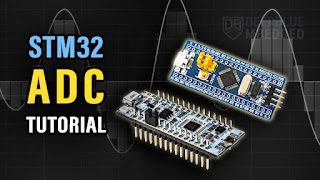How to remove write protection of STM32 chip?
Removing write protection on an STM32 microcontroller is necessary when the Flash memory or option bytes are locked, preventing you from programming or erasing the chip. This can happen due to incorrect configuration, security settings, or accidental locking. Below are the steps to remove write protection from an STM32 chip:
1. Identify the Cause of Write Protection
Write protection on STM32 chips can be caused by:
Option Bytes Configuration: The Read-Out Protection (ROP) or Write Protection (WRP) settings in the option bytes may be enabled.
Hardware Write Protection: Some STM32 chips have a hardware write protection pin (e.g.,
nWRP).Software Lock: The Flash memory may be locked by software (e.g., using the
FLASH_CRregister).
2. Tools Required
ST-Link Debugger/Programmer: To connect to the STM32 chip.
STM32CubeProgrammer: Software to configure and program the STM32.
IDE (Optional): STM32CubeIDE or Keil MDK for debugging and programming.
3. Steps to Remove Write Protection
Method 1: Using STM32CubeProgrammer
Connect the STM32:
Connect the STM32 to your PC using an ST-Link debugger.
Ensure the connections (SWD or JTAG) are correct.
Launch STM32CubeProgrammer:
Open STM32CubeProgrammer and select the ST-Link as the programmer.
Connect to the Chip:
Click Connect to establish a connection with the STM32.
Check Option Bytes:
Go to the Option Bytes tab.
Check the Read-Out Protection (ROP) and Write Protection (WRP) settings.
Disable Write Protection:
If WRP is enabled, disable it by setting the WRP sectors to
0xFFFFFFFF(no protection).If ROP is enabled, change it to Level 0 (no protection).
Apply Changes:
Click Apply to save the changes. This will erase the Flash memory and reset the option bytes.
Reconnect and Program:
Reconnect to the chip and program it with your firmware.
Method 2: Using STM32CubeIDE or Keil MDK
Connect the STM32:
Connect the STM32 to your PC using an ST-Link debugger.
Open the IDE:
Launch STM32CubeIDE or Keil MDK.
Debug Configuration:
Create a debug configuration and connect to the STM32.
Erase the Chip:
Use the Erase option to clear the Flash memory. This will also reset the option bytes.
Disable Write Protection:
If the option bytes are still locked, use the Option Bytes editor in the IDE to disable write protection.
Program the Chip:
Program the chip with your firmware.
Method 3: Using Hardware Reset (if applicable)
Check Hardware Write Protection Pin:
Some STM32 chips have a hardware write protection pin (e.g.,
nWRP).Ensure this pin is not pulled low, as it can enable write protection.
Power Cycle the Chip:
Disconnect and reconnect the power to the STM32.
Reconnect and Program:
Reconnect to the chip and attempt to program it again.
Method 4: Using Bootloader Mode
Enter Bootloader Mode:
Set the BOOT0 pin to high and BOOT1 pin to low.
Reset the chip to enter bootloader mode.
Use STM32CubeProgrammer:
Connect to the chip using STM32CubeProgrammer in bootloader mode.
Erase the chip and reset the option bytes.
Exit Bootloader Mode:
Set BOOT0 back to low and reset the chip.
4. Common Issues and Troubleshooting
Connection Issues:
Ensure the ST-Link is properly connected to the STM32.
Check the wiring (SWDIO, SWCLK, GND, and VCC).
Option Bytes Not Updating:
Ensure the chip is not in a locked state (e.g., ROP Level 2).
Use the Mass Erase option in STM32CubeProgrammer to reset the chip.
Hardware Write Protection:
Check the
nWRPpin (if available) and ensure it is not pulled low.
5. Preventing Future Write Protection
Use Option Bytes Carefully:
Avoid enabling ROP or WRP unless necessary.
Backup Option Bytes:
Save the option byte configuration before making changes.
Test Firmware:
Test your firmware thoroughly to avoid accidental locking.
By following these steps, you should be able to remove write protection from your STM32 chip and reprogram it successfully.




评论
发表评论